Денят започна с представяне на всеки и посочване на причината за идването му. Тези причини бяха широкообхватни:
- Общ интерес да научат повече за залесяването
- Интересуват се да научат повече за залесяването за собствения си бизнес
- Искат да научат повече за залесяването, за да могат да съветват другите
- Интерес към бизнес модела на залесяване
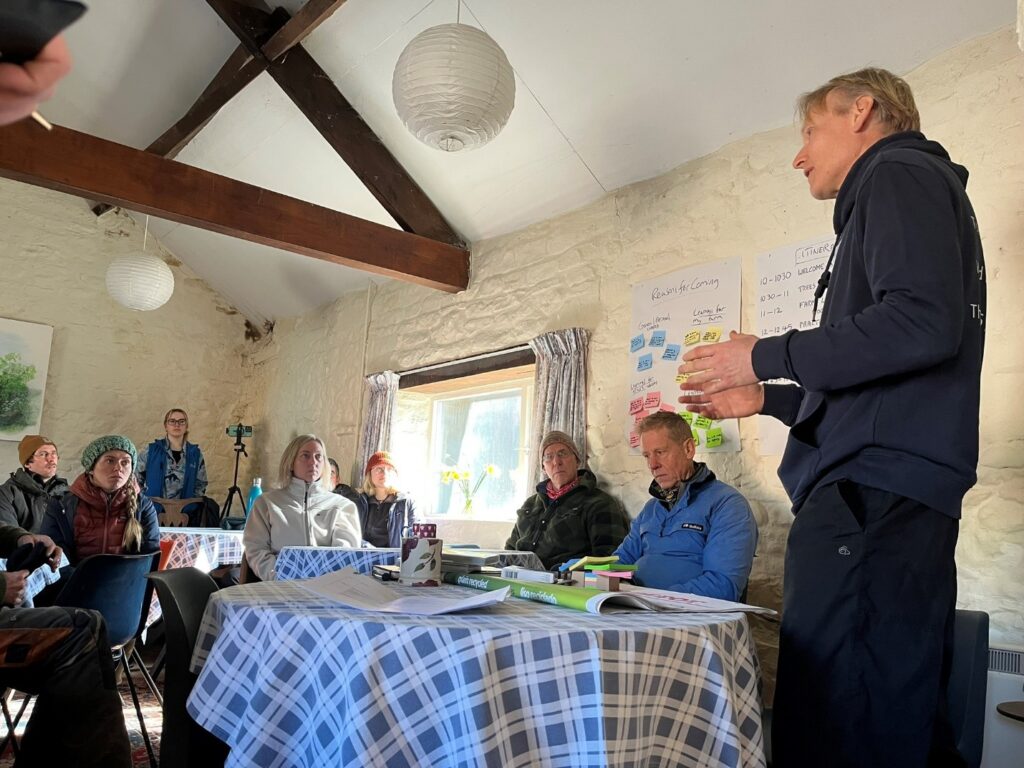
Тим Никълсън направи кратък преглед на историята на фермата, която е собственост на семейството му от закупуването ѝ от дядо му през 50-те години на миналия век. Фермата е преминала през еволюция, която включва етапи на предимно обработваемо производство с високи производствени разходи и служене като ключово място за провеждане на търгове за млечен добитък. Откакто Тим поема управлението, фермата се развива в по-регенеративна посока, в която дърветата са съществена част. Сега фермата е базирана на месодайно говедовъдство с породите Лонгхорн и Белт Галоуей и предоставя място за провеждане на конференция за регенеративно земеделие. Carbon Calling. Това е и базата на Tim's https://cactustreeguards.co.uk/ бизнес.
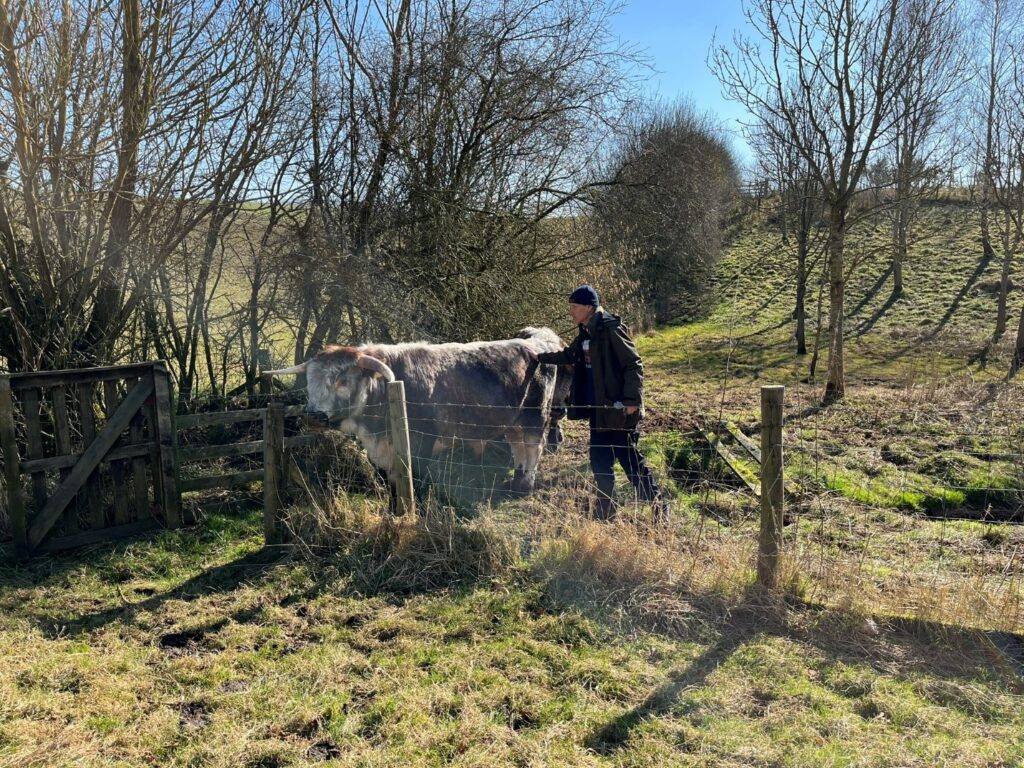
Тим заведе групата на пешеходна обиколка на част от фермата, като спря, за да види различни области, където дърветата са интегрирани в системата, включително:
- Ново горско пасище, създадено в рамките на опцията Countryside Stewardship, състоящо се от широколистни дървета (напр. дъб, липа, ружа, сладък и конски кестен), като всяко дърво е засадено с няколко придружаващи храста (напр. глог) в рамките на двойна защита от кактуси, която ще бъде премахната след около 10 години. Тези дървета са били предимно в редици, но в рамките на полето е имало и по-гъсти насаждения от засадени храсти
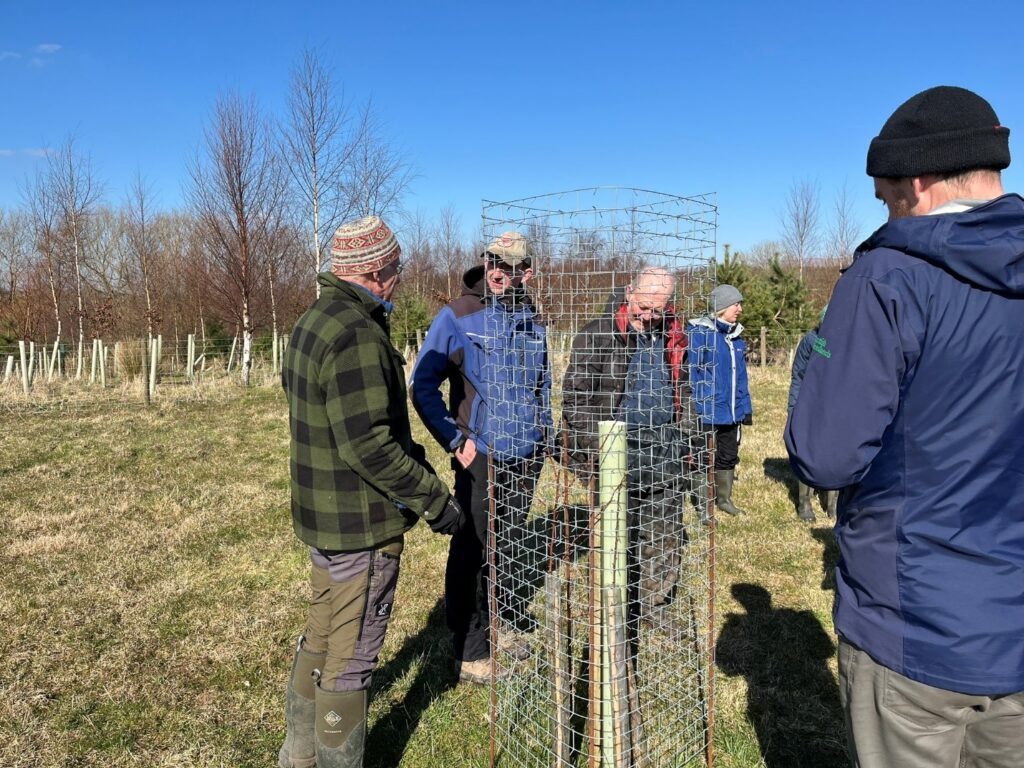
- Беше отбелязано, че от гледна точка на въглеродните емисии кактусовите предпазители са устойчив вариант само при сравнително ниска гъстота на засаждане и когато се използват многократно.
- Близка ивица гора, засадена през 2012 г. и отворена за паша. Няколко дългокосмести бика използваха тази зона, включително за търкане (грижа за тялото).
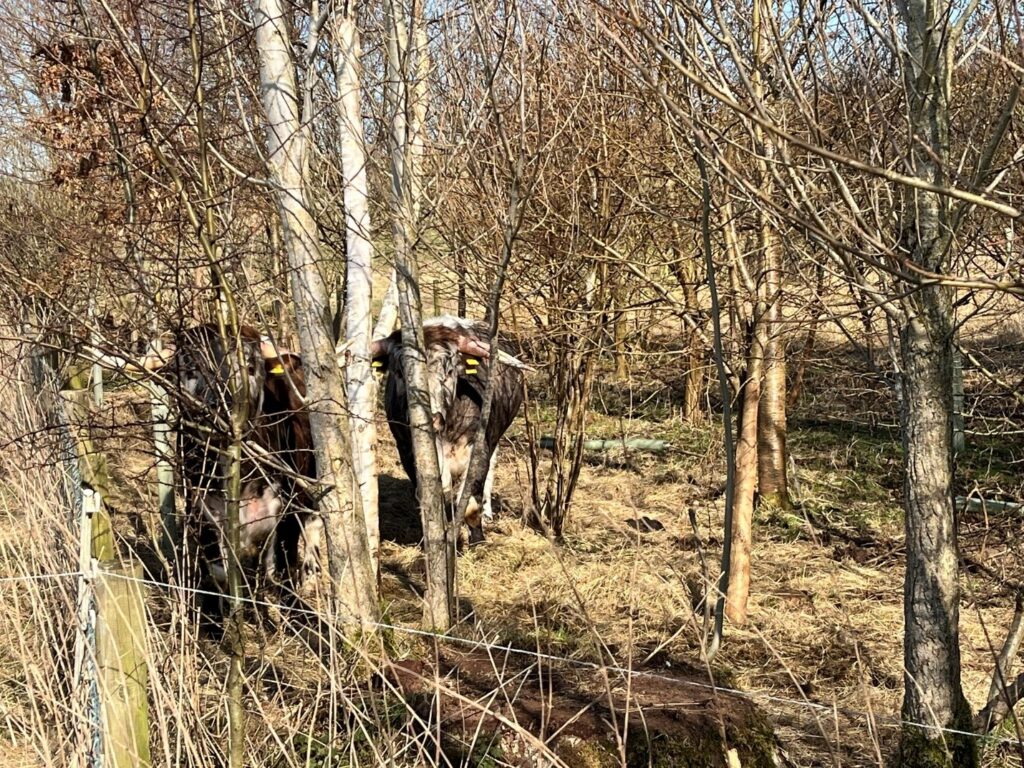
- Увреждането на някои от по-уязвимите дървета не се счита за проблем, тъй като то създава по-голямо структурно разнообразие и следователно биоразнообразие. Обсъдихме хранителните свойства на дървесната паша и потенциалната роля на богатата на танини паша, която помага на животните да намалят фитотоксините, приемани от богатите на видове пасища.
- Положен жив плет с ширина около 4-6 м и разстояние между него и съседната ограда, за да може да се постави живият плет, без да се премахва оградата. Това прави по-възможно следването на ротация на полагането, независима от цикъла на необходимост от подмяна на оградата. Стърготините от полагането се използват в котела за биомаса на фермата, който обслужва две къщи. Тим планира да се сдобие с две пещи за производство на биовъглен за подобряване на почвата.
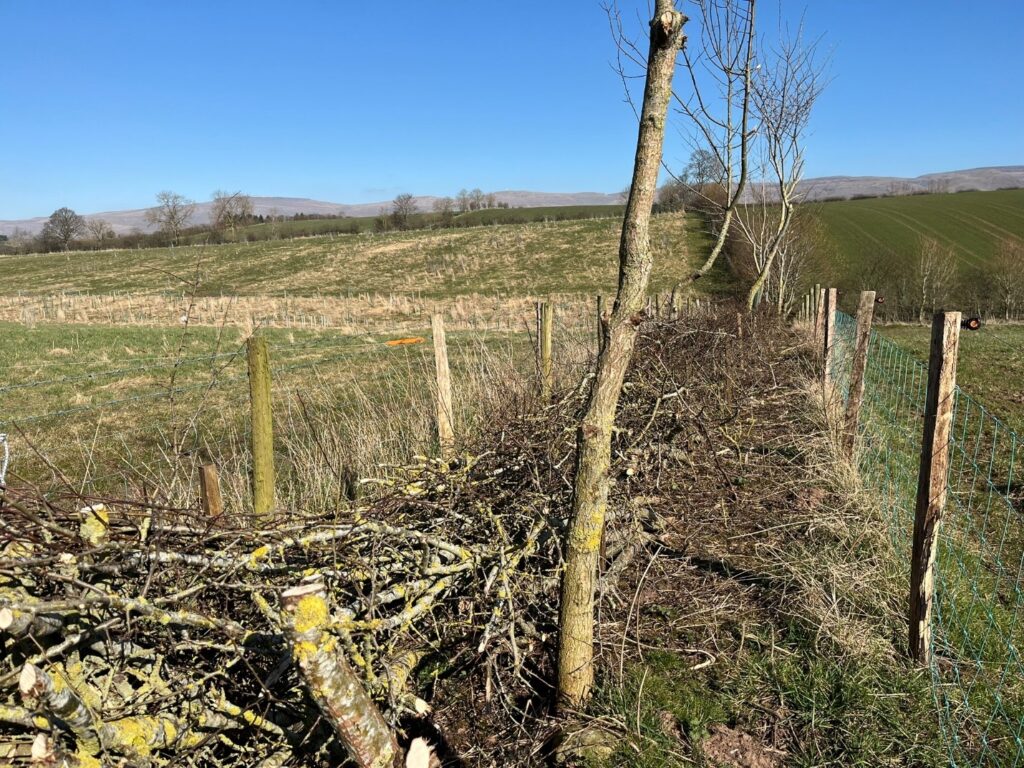
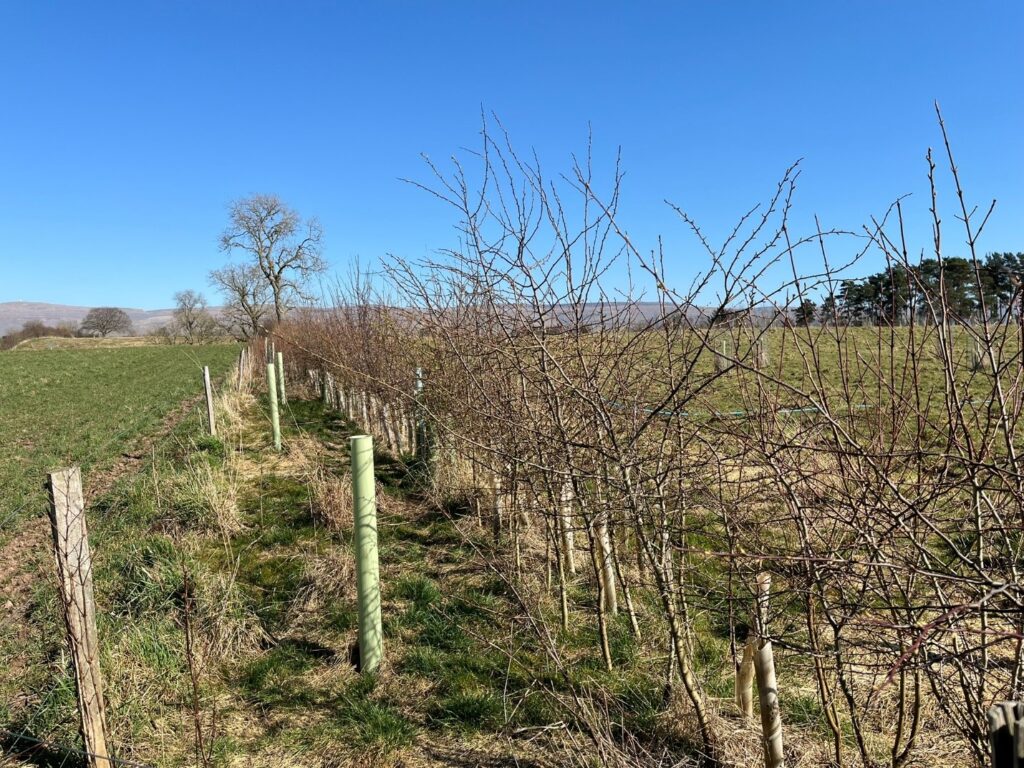
- Площ от горски масиви, засадена по схемата за управление на по-високо ниво (HLS). Понастоящем е оградена, но е готова да бъде отворена за добитък. Сега тя е в рамките на район, който се развива по нова схема като горско пасище. Около 800 ясена са били отстранени от гората със заповед поради болестта "ясенова упадък" и са били заменени с дървета, които растат донякъде потиснати под сянката на по-ранните насаждения.
- Друга горска пасищна площ с по-естествено разпръснати широколистни дървета (отново смесени с храсти в рамките на защитата от кактуси) и със смес от семена на диви цветя от Кумбрия, засети в матрицата на пасището. Имаше известно обсъждане на качеството на семената и очевидното наличие на неместна червена детелина, която следователно няма да се запази толкова добре. На едно от местата, откъдето се открива добра гледка, беше засаден кръг от дървета, като се предвижда след време добитъкът да го използва за подслон. Една част от полето е била засадена със смес от сортове ябълки (напр. James Grieve, Discovery). Те са засадени заедно, за да се подпомогне събирането на плодовете, но обсъдихме стойността на ябълките (ябълки от вида "краб", както и домашни ябълки, включени в живия плет) за дивата природа, т.е. за птиците, като например полската чучулига.
- Групата прегледа площ с изсечен явор, чиято дървесина е подходяща за огрев, но благодарение на антибактериалните си свойства може да се използва и в кухнята.
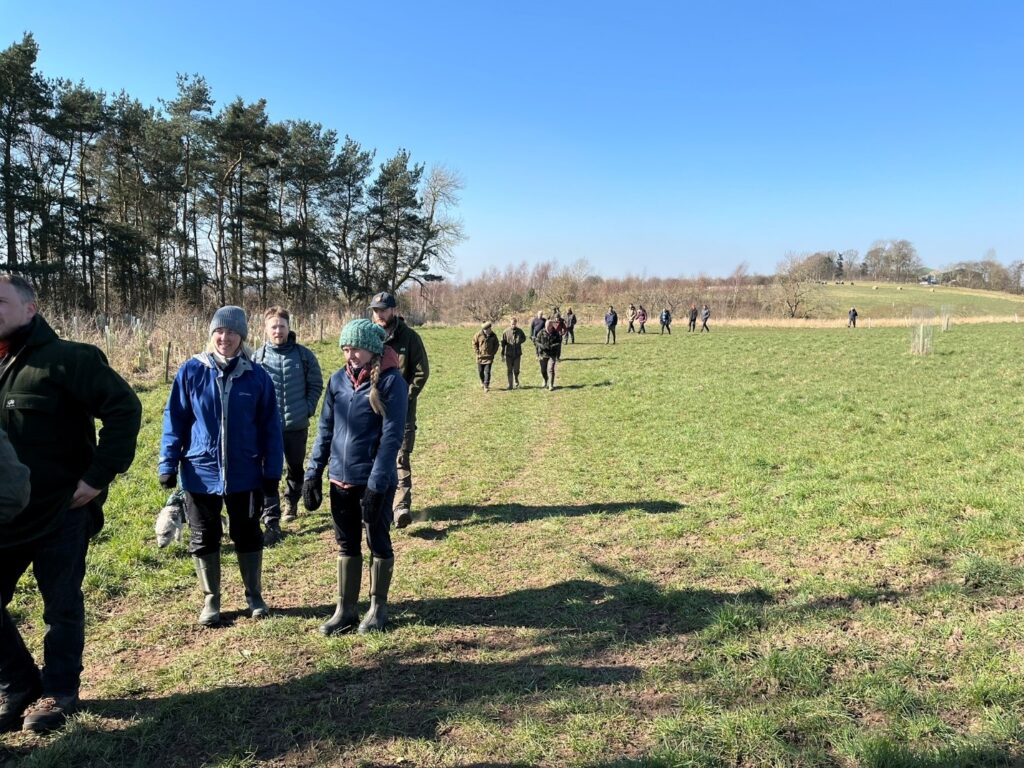
- Паднало дърво от сребриста бреза е пример за значението на мъртвата дървесина за екологията на стопанството, а друга област показва силната способност на трепетликата да смуче.
- Стадото от кочове с ремъци се редува между падоците с допълнително хранене със сено, като всеки ден се разточва по една бала. Предпочита се сено, богато на видове. Дългосрочната цел е във всяко пасище да има няколко разпръснати дървета, които да осигуряват подслон.
- Беше зададен въпрос за икономическата обосновка на това, което групата е видяла. За Тим основната цел е възстановяването на земята. Въпреки че в момента има висока пазарна цена за говеждото месо (в точката на продажба в кланицата), той не знае дали икономическата ефективност е достатъчна, въпреки че това ще бъде важен въпрос за повечето земеделски стопани.
В следобедните часове Лий Басет направи практическа демонстрация на работа с кестенова гора. Тим беше засадил експериментално една площ със сладък кестен и младите дървета вече бяха готови за първата сеч.
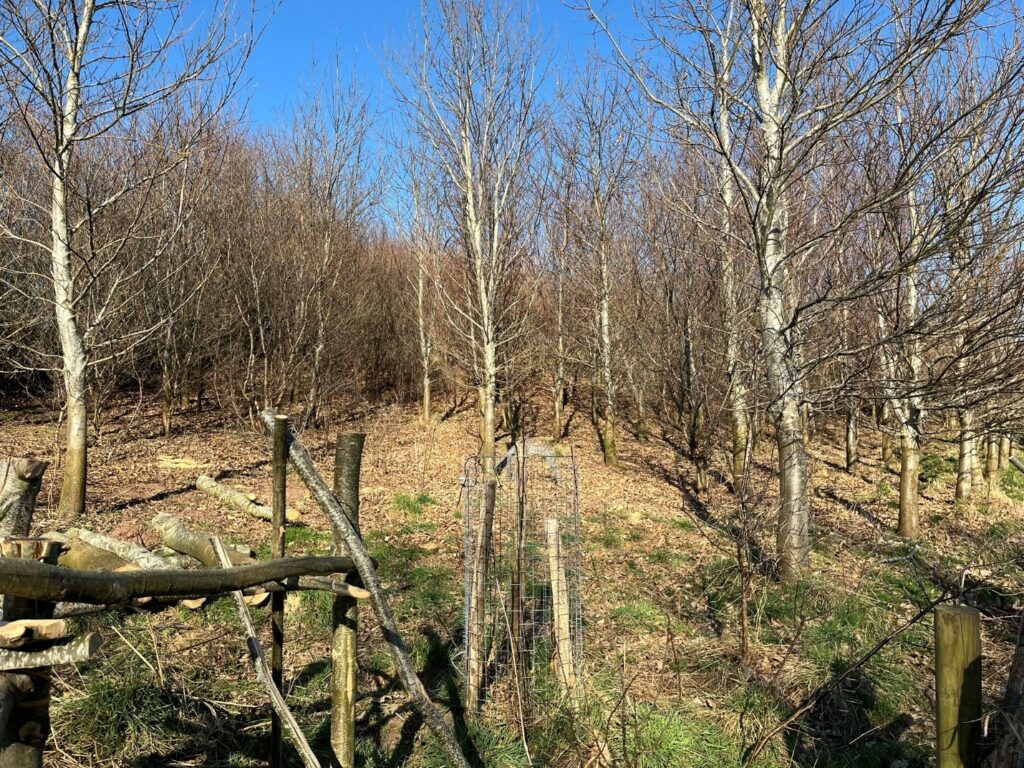
Дървеният материал е с високо съотношение сърцевина/сапун, което му осигурява добри дълготрайни свойства като стълб за ограда, значително по-дълготрайни от обработените стълбове от иглолистна дървесина. (Беше отбелязано, че сезонът на дърводобива е важен, като зимата е много по-добра от лятото, когато соковете в дървесината намаляват значително нейната трайност.) На юг има много кестенови гори, но не и на север. Дали това е по-скоро културна разлика, отколкото климатична пригодност? Дърветата на Тим със сигурност се справят добре. Обсъди се въпросът за снабдяването с дървета и сортове, като се има предвид, че сладкият кестен се отглежда предимно за ядки във Франция. Местните сладки кестени обикновено дават по-малко ядки с размер, подходящ за консумация, въпреки че един местен обект, който дава добри ядки, беше даден за пример.
Дърветата са били добре разположени и вероятно е можело да бъдат сгъстени, което би спомогнало за още по-правилен растеж и съответно за качеството на дървесината. Това е можело да се подобри и чрез подрязване, за да се премахнат страничните клони и да се намали броят на възлите.
При отсичането на млади дървета подрастът няма да е толкова силен, колкото при добре утвърдените стъбла (със силна коренова система), с които Лий е свикнал повече в южната част на страната. Интересна разлика между регионите е, че в южната част на страната подрастът не се огризва от елени, докато в Кумбрия това е така. Защитата може да бъде осигурена чрез натрупване на дървесна маса над столчето, временно поставяне на ограда над него или ограждане на района с двойно по-високи ролки мрежа. (Съществуват субсидии от CS за временни огради за елени.) Възстановяването се състои от голям брой стъбла, които естествено изтъняват, за да останат няколко силни, които узряват.
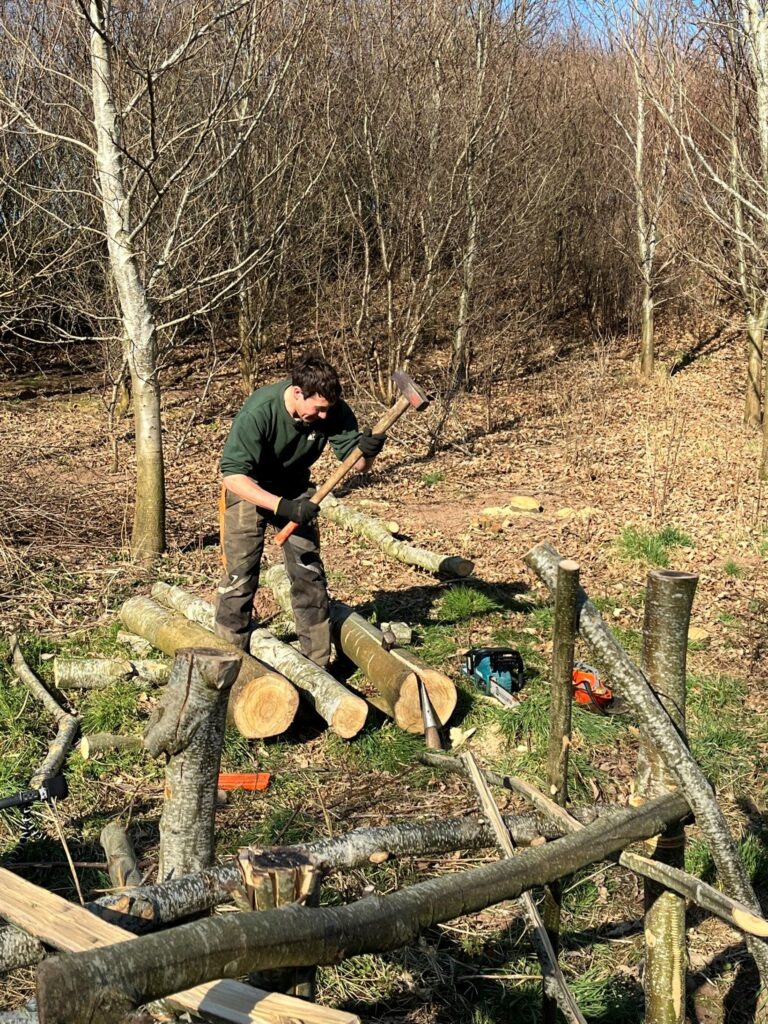
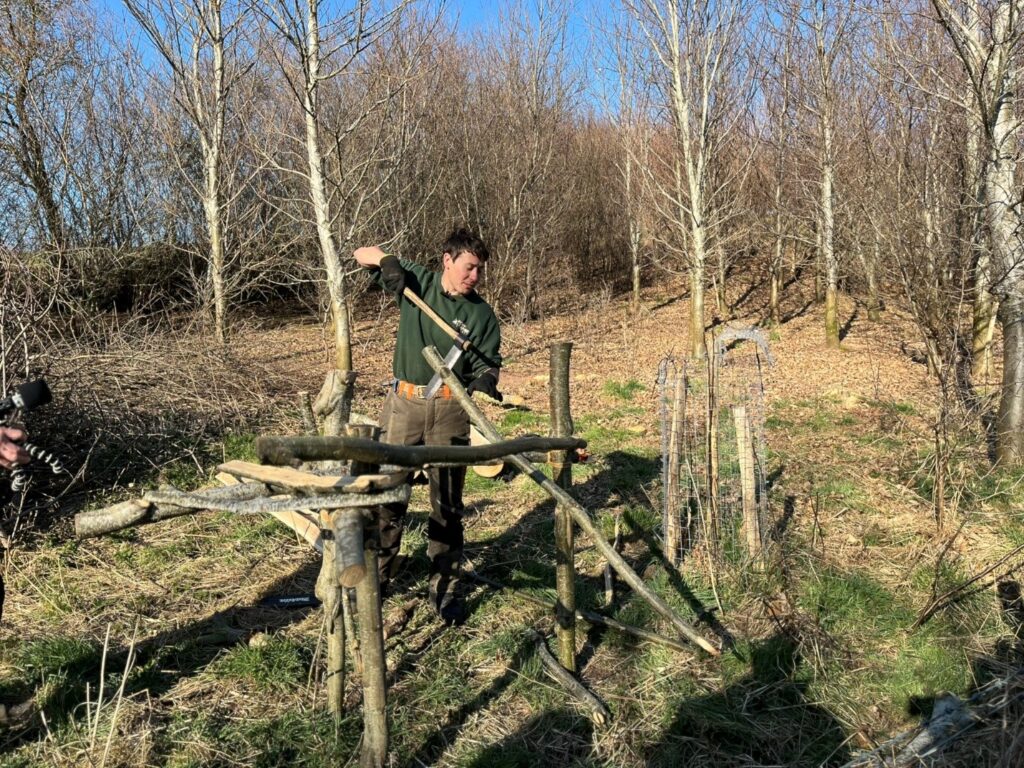
Лий направи практическа демонстрация на цепене и разцепване с помощта на ръчни инструменти и занаятчийски подходи. От отрязаната дървесина могат да се получат различни материали за огради: цедилки (стъбла с дължина 5 или 6 фута, разцепени наполовина), междинни стъбла (разцепени на четвърт), както и парапети и палети, и колове за поставяне на жив плет. Въпреки че има някои продукти от по-висок клас, като например покривни керемиди, материалите за огради представляват добра междинна позиция за добавяне на стойност в стопанството към основния продукт - дървата за огрев. Инвестирането в кестенови гори за дългосрочно производство на материали за бъдещи огради трябва да има добър икономически смисъл за земеделския стопанин.